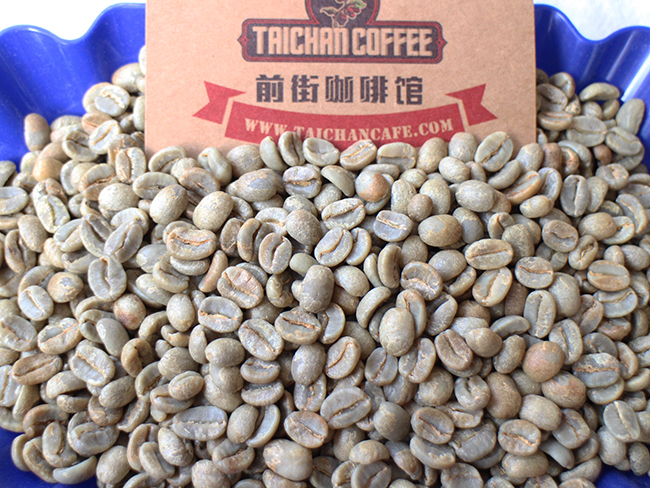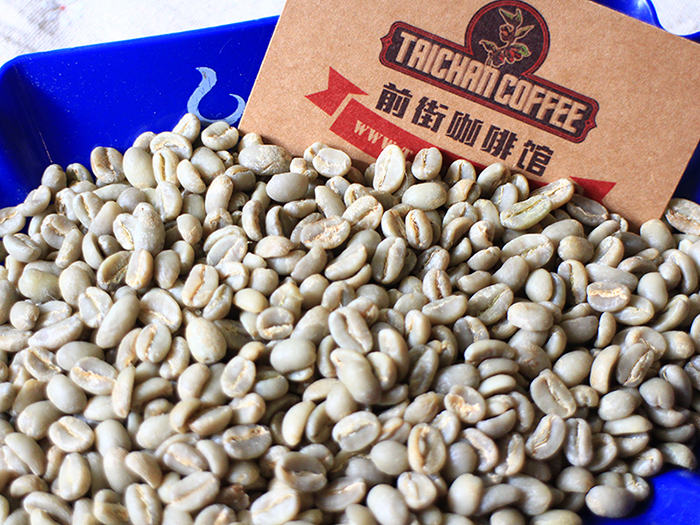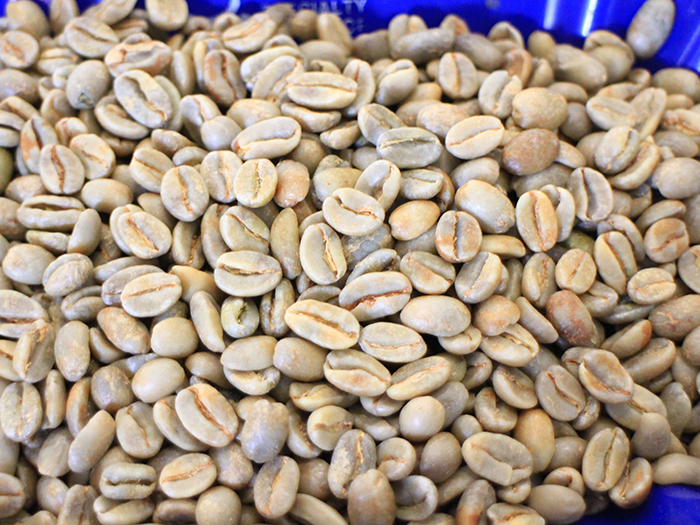What kind of raw beans are high-quality raw beans? How to choose raw coffee beans? Sumatra, Indonesia
What kind of raw beans are high-quality raw beans? First look at the surface of beans, fresh and high-quality raw beans, the surface is shiny, in addition, the processing of good raw beans, uniform color, the surface of uneven color can not be called good beans, must choose uniform color. Secondly, the particle size is the same, which is also evidence of good quality management. Make sure that the particle size is the same when you buy it. Even and neat coffee raw beans can achieve a consistent baking effect; otherwise, some are too deep and bitter, and some are too shallow and sour, which will affect the overall taste of roasted coffee beans. Raw beans are divided into several grades according to quality standards, which vary from place to place, basically according to size and shape. The higher the grade, the better the quality. At present, as the domestic coffee raw bean market has just started, the coffee raw beans sold are mainly low-grade futures beans. People usually have a lot of defects in the raw beans they get. Defective coffee beans are quite harmful, including that the mutated beans are neither flat nor garden beans. Due to abnormal development, the raw beans are broken in the center when they are shelled. This kind of bean is prone to uneven baking. Fermented beans / black beans are fermented internally in the process of processing or washing. It has the smell of fermented acid. Unripe beans / white dead beans are harvested when the coffee fruit is not fully ripe. This kind of bean is ivory after baking and tastes green and astringent. The process of processing and transportation of mildew beans is affected by damp, rain and mold. As long as one bean is moldy, it will soon spread to others, so be careful. Worm-eaten beans are eaten by a pest called coffee bark beetle, and there are insect eyes on the beans, which make coffee smell.
Country: Indonesia
Grade: G1BI 19 items +
Producing area: Gayo Mountain area of Aceh Province
Altitude: 1100-1300 m
Treatment method: traditional wet planing method
Variety: Katimo, Kaddura, Tibika, Sidikalong
Producer: local small farmers in the Gayo Mountains
Flavor: round and pure taste, mellow thickness, spices, herbs
Indonesian coffee is very diverse in quality, most of which are based on the island origin as its market name: such as Sumatra, Sulawesi, Jawa or Timur. The advantage of Indonesian coffee is that most coffee is characterized by strong, introverted flavor and lively moderate acidity. Chinese people think highly of Indonesian Mandheling coffee, and it is one of the coffee products with the highest acceptance of single coffee.
Indonesia Mandheling was once praised as the best unique wet peeling coffee bean in the world. Mantenin is a trademark merchandise. Nowadays, as long as the red cherry fruit of coffee harvested in Indonesia is processed by this unique wet peeling method, it will be sold as Mantenin coffee beans. Mandailing grew coffee from the Tapanuli region of northwestern Sumatra, because at the end of World War II, a Japanese soldier introduced the Japanese market and changed the wrong Mandailing into Mandheling coffee because of mispronunciation.
Sumatra (Sumatra):
Coffee in Sumatra is very complex and elusive. Although Sumatra is large, coffee is not grown all over the island. Coffee trees are grown in only the two northernmost provinces of the island's eight provinces, Aceh and Jiangsu: Aceh coffee is mainly produced in the GayoMountain mountains around Lake LakeTawar, and most of the farmers in this area are local GayoPeople aborigines. On the other hand, coffee in Jiangsu Province is mainly produced in the world's largest super crater lake-LakeToba Lake (Tuba Lake) and south Lindong (Lintong) producing area, and the local farmers are mostly composed of BatakPeople aborigines. Due to many sharecropper producers and the use of their unique semi-washing treatment and lack of iron in the soil, coffee beans in this area have a special blue color at the stage of fresh beans.

Important Notice :
前街咖啡 FrontStreet Coffee has moved to new addredd:
FrontStreet Coffee Address: 315,Donghua East Road,GuangZhou
Tel:020 38364473
- Prev

What kind of raw beans are high-quality raw beans? How to choose raw coffee beans? In the sun, Yega Xuefeisheng
What kind of raw beans are high-quality raw beans? First look at the surface of beans, fresh and high-quality raw beans, the surface is shiny, in addition, the processing of good raw beans, uniform color, the surface of uneven color can not be called good beans, must choose uniform color. Secondly, the particle size is the same, which is also evidence of good quality management. Make sure that the particle size is the same when you buy it.
- Next

What kind of raw beans are high-quality raw beans? How to choose raw coffee beans? Yega, Ethiopia
What kind of raw beans are high-quality raw beans? First look at the surface of beans, fresh and high-quality raw beans, the surface is shiny, in addition, the processing of good raw beans, uniform color, the surface of uneven color can not be called good beans, must choose uniform color. Secondly, the particle size is the same, which is also evidence of good quality management. Make sure that the particle size is the same when you buy it.
Related
- Detailed explanation of Jadeite planting Land in Panamanian Jadeite Manor introduction to the grading system of Jadeite competitive bidding, Red bid, Green bid and Rose Summer
- Story of Coffee planting in Brenka region of Costa Rica Stonehenge Manor anaerobic heavy honey treatment of flavor mouth
- What's on the barrel of Blue Mountain Coffee beans?
- Can American coffee also pull flowers? How to use hot American style to pull out a good-looking pattern?
- Can you make a cold extract with coffee beans? What is the right proportion for cold-extracted coffee formula?
- Indonesian PWN Gold Mandrine Coffee Origin Features Flavor How to Chong? Mandolin coffee is American.
- A brief introduction to the flavor characteristics of Brazilian yellow bourbon coffee beans
- What is the effect of different water quality on the flavor of cold-extracted coffee? What kind of water is best for brewing coffee?
- Why do you think of Rose Summer whenever you mention Panamanian coffee?
- Introduction to the characteristics of authentic blue mountain coffee bean producing areas? What is the CIB Coffee Authority in Jamaica?

